Do lab buildings affect the work of the scientists inside them? James Mitchell Crow surveys some grand designs
Do lab buildings affect the work of the scientists inside them? James Mitchell Crow surveys some grand designs
Walking into the University of Melbourne’s Bio21 Institute, with its great glass atrium, it is hard not to be at least a little impressed. The building, which houses around half of the university’s chemistry faculty in a multidisciplinary facility, sits at the university’s western fringe, and presents a thoroughly modern, angled glass façade to the general public walking past.

Inside, a grand central staircase dominates the atrium, drawing the eye upwards towards the glass roof seven storeys above and the blue sky beyond. The staircase’s organically shaped, timber-clad landings contrast with the hard steel and glass surfaces that make up many of the internal walls.
Turn your back on the staircase and another view emerges, this time downwards into the belly of the building. Another wall of glass gives a view down into the basement, where some of the institute’s larger tools-of-the trade are housed – a suite of NMR machines, including a $5 million (£3.27 million) 800MHz monster.
But impressing a visitor on a fleeting visit is one thing. What is it like to work in such a place, day in and day out? Is such a grand atrium a good use of space? Can building design improve the way that scientists work?
Balancing space
Architect Neil Appleton, a director at Melbourne firm Lyons, argues strongly that it can. ‘Building design is fundamental to collaborative research,’ he says. Research buildings are a speciality of the practice, which has received international recognition for its work. Working with scientists to get the design of their new building right is a ‘deeply satisfying’ process, he adds. ‘Scientists are surprisingly adept at engaging in the design process – for example, their understanding of three-dimensional space.’
The firm has worked on the new chemistry building at the Australian National University in Canberra and the La Trobe Institute for Molecular Science in Melbourne, both near-complete, and its designs typically incorporate several themes intended to encourage people to work together. The first is simply to make each floor of the building as big as possible, in order to locate as many people together as possible. As well as office and lab space, open-plan areas are a feature, from informal spaces for impromptu meetings through to smaller areas with couches where people can simply share a coffee. They all also feature one large space big enough for everyone in the building to get together at once. ‘You need a diversity of space,’ says Appleton. ‘You need spaces that allow people to think quietly, and spaces where they can talk noisily.’
Scientists are surprisingly adept at engaging in the design process
Appleton is convinced that such designs make a difference, but do the scientists agree? David MacMillan does. In late 2010, MacMillan and the rest of the chemistry department at Princeton University in New Jersey, US, moved from just about the oldest academic chemistry building in the country into the newest. It is a facility designed from the ground up to encourage its occupants to interact and communicate. And it is the simple-sounding design ideas that can make the difference.
‘I was at Caltech before Princeton, and they had this clever idea in the organic group: all of the organic faculty offices were right next door to each other on one floor,’ MacMillan recalls. When people are located together, they talk to each other more, he says. Through these everyday social interactions, a rapport with colleagues is established. ‘You might talk about sport, or what was on TV last night – or what’s going on in your lab. Through that science talk it is so much easier to have collaborations or think about ways that the science can go forward. At Princeton we worked very strongly on that principle,’ he says.
The same idea extends through to the large, open research lab space. There are no walls between research groups, to encourage students to talk to one another and to discourage each research group from becoming its own clique. Examples suggest that the idea can work. MacMillan recently sat on the exam panel of a student from the lab of his Princeton colleague Paul Chirik. ‘He was using ligands for catalysts that came from my lab – he knew that we were working on this because of all this open conversation, which led him to try something that is working for them.’
The new building also allowed other possibilities for encouraging collegiality, says MacMillan. ‘We have a very large atrium with a cafe at the bottom where the coffee is free for all faculty, grad students and postdocs. Coffee is a great way to push people to interact. Coffee beans don’t cost that much money and the morale you get from it is just tremendous – students feel appreciated.’ It is the kind of idea that is much easier to get working well when it can be designed into a new building from the start, he says.
Positives and negatives
To put together their plans for Princeton, the UK architects that designed the building – Hopkins Architects from London – looked at and learned from a number of recently built chemistry buildings, including at the University of Oxford in the UK.
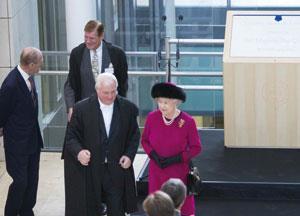
In February 2004, the Queen opened Oxford’s Chemistry Research Laboratory, and so the chemists based there have had almost a decade of experience living with the building. As at Princeton, it was designed with lots of open spaces, including a big atrium with a cafe, where people can meet and interact, explains Tim Softley, Oxford’s current chairman of chemistry. ‘I think this has worked pretty well,’ he says.
Until the 1990s, Oxford had three separate chemistry departments: inorganic; organic; and physical and theoretical. After the three departments formally merged, each still had their own, old, building. ‘In the new building, all the organic chemists are in here, but there are also at least some of the inorganic and the theoretical and physical chemists,’ says Softley. ‘The plan was to integrate ourselves more into a single department. Having these open meeting spaces has certainly helped a lot in terms of doing that.’
We’re learning lessons about how buildings work when you really push them hard
Oxford is currently in the process of raising funds for a second new building to house the rest of the department still in their old labs. The experience with the Chemistry Research Laboratory, positive and negative, will certainly help to inform the new design, says Softley. One deliberate design element that has worked well was the use of repeating, generic, modular lab space. ‘The principle there was flexibility,’ he says. Expanding research groups can easily adopt more space, and vice versa. ‘Every year we re-evaluate how much space everybody needs, and as the space is quite generic that certainly helps.’
Unfortunately, the building itself cannot be expanded quite so easily. Designed to accommodate 440 people, it currently has 600 people working there. ‘We are a growing department, one of the largest in the world, and we’ve got a lot of new people whose research groups are expanding,’ Softley says.
Squeezing more people into the building is causing problems; for example, whether the air-handling systems can cope with the number of fume hood sashes that are open at any one time. ‘We’re having some issues at the moment just because we are trying to make maximum use of the building and are putting some strain on it. We’re learning some lessons there about specifications of buildings and how they work when you really push them hard, seven to eight years into occupancy. It just increases the pressure on us to get the new building,’ he adds.
Teething troubles
Back at the Bio21 Institute, head of chemistry Frances Separovic deliberately keeps her voice down as she talks about the building. Not because she is sharing secrets, she just does not want to interrupt the work of her colleagues. With her office on the top floor separated by a glass wall from the atrium below, Separovic is all too aware of how sound can travel up through the open structure and into the offices above.
As a multi-disciplinary facility, encouraging communication and collaboration between the diverse range of researchers located there was again a key part of the design – and the building incorporates large open plan areas for informal meetings. The airy atrium effectively splits the building into two wings of office and lab space on each floor. The open plan areas sit between the two wings, suspended within the atrium area itself.
Separovic says she would prefer smaller, less open, more private spaces – but talking to some of the postdocs who work there reveals a different perspective. The space is well used by students having lunch, they say, and its position as a bridge between the building’s two wings ensures that research groups from both sides of the building congregate there and mix together.
One Bio21 design element on which both parties agree is the dedicated meeting rooms, including one on the top floor with spectacular views across treetops toward the city centre. ‘We have research group meetings in here and we enjoy sitting here together,’ Separovic says. And all agree that the building looks great.
As at Oxford, design elements that have worked well, and those that have been less successful, are helping to inform the design of another project, the extensive restructuring and refurbishment of the main chemistry building.
Good looks and glass walls
A central design theme common to many chemistry buildings built recently or in construction is the extensive use of glass, inside and out. Walking around Bio21, where offices and corridors are separated by clear glass walls, it is obvious that not every occupant is a fan of the idea – many office walls are plastered with posters to claw back a modicum of privacy.
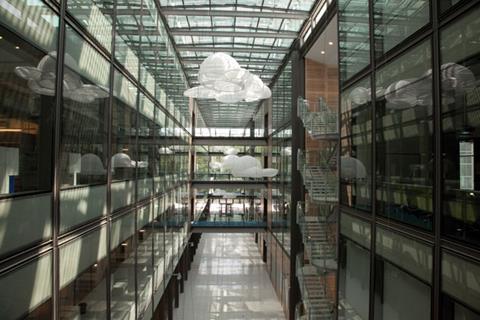
Appleton defends the use of glass, saying that architects are responding to the brief from university clients to open up internal space. It is better to start with more windows than trying to add them later, he says. ‘People can put blinds in – it is much easier than punching holes through walls.’
Every morning I walk into that building there is an incredible feel-good feeling
Perhaps Princeton has the best balance. There too the office walls are glass, but the glass is opaque. ‘You can’t see through it, but you can tell if people are there are not, and so it is easy to go find people and talk to them,’ says MacMillan.
Also common to Oxford, Princeton, Bio21 and many Appleton’s other designs is a grand glassy façade opening into an airy, open atrium. Are these elements a good use of funds, and of space? Does a chemistry building need a grand, airy design?
Again, MacMillan is overwhelmingly positive about the idea. ‘We wanted a big space, and we wanted it to be more than just functional, we wanted it to be beautiful – which I would strongly argue that it is,’ he says. ‘The ordinary scientist can walk through and say “This is a pretty spectacular building.” It has an ultra-modern feel to it that gives you a real sense of moving into the future.’
And the space is helping to bring future staff to Princeton. ‘For recruiting, when we’re trying to hire people, they come and see the space and can instantly imagine themselves working there. It really draws you in,’ Macmillan says. ‘Every morning I walk into that building there is an incredible feel-good feeling,’ he adds. ‘It just puts you in a good mood.’
James Mitchell Crow is a science writer based in Melbourne, Australia
Top of the classrooms
Academic chemistry buildings are about more than research, with teaching their other key function. For years, lecture theatres and other teaching spaces did not change much in their design. Today, technology is changing the way that chemistry is taught – and the spaces that it is taught in.
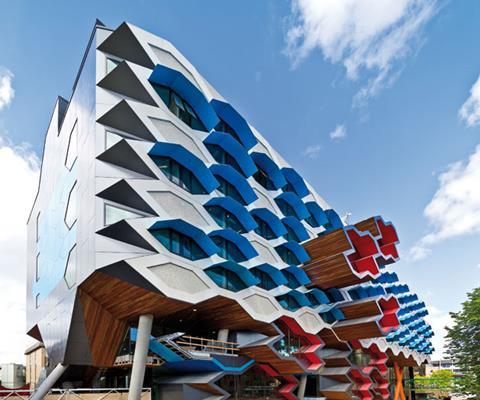
Architect Neil Appleton, a director at Melbourne firm Lyons, has been involved in designing a number of new science buildings on university campuses around Australia. As well as standard, large lecture spaces, their latest buildings incorporate ‘lectorial’ spaces. Rather than being seated in rows, students sit in clusters around tables with audio-visual (AV) equipment. Tables are arranged so that each student can still face the front of the room for a traditional lecture, but they can also break out into small groups, using the computer embedded within each table to tackle a task. Any table’s computer screen can also be projected onto the screen at the front, to help facilitate further discussions.
It is a similar story in the teaching labs. AV screens hover above each bench, and the labs also feature adjacent tutorial spaces, to better connect practice with theory.


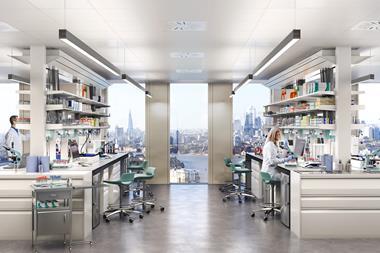
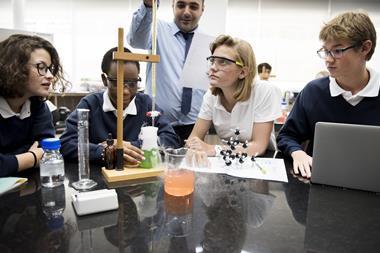
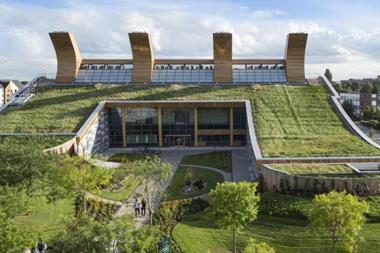
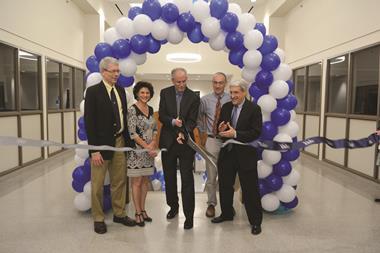







No comments yet